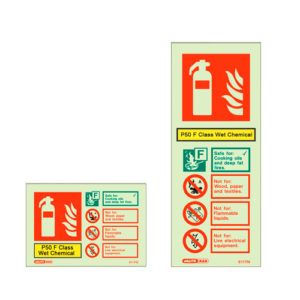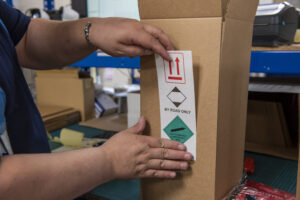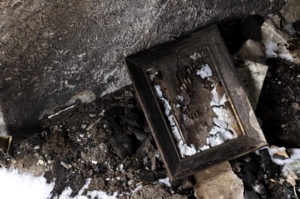Wednesday 25th May 2011
The Dorgard is one of our most popular products. It helps our customers to stay legally compliant and at the same time keeps fire doors open when there are periods of high footfall or when the temperature gets stifling during the summer. The Dorgard comes with a very handy and thorough manual. Nevertheless, we do get asked a few questions and to help our customers, we now have compiled an overview of all the questions asked and the answers to them.
1.) Can the Dorgard operate at only one decibel level?
Our Dorgard reacts to a sound level adjustable between 65 dB and 85 dB, so all sounds in excess of 65 dB will activate the Dorgard. This complies with BS 5839 which gives 65 dB as the minimum sound level for fire alarms.
In situations where the ambient noise level is above 80 dB, Dorgard has a safety feature that allows it to release automatically to all sounds above 65 dB as you would probably not hear a 65 dB fire alarm over the noise level in this situation.
The Dorgard is also capable of being adjusted to operate to the sound level of an individual fire alarm making it adaptable to any particular environment.
2.) When a fire alarm sounds why does Dorgard not close the door immediately?
Dorgard only listens for a sound every 4 seconds and the sound has to be continuous for 10 seconds for it to operate. This helps to preserve the battery life of the unit and means the operation should not be delayed by any more than 14 seconds.
This compares with other similar retainers that are wired into the fire alarm system and have a built-in delay.
3.) Is the Dorgard a fail-safe product?
In the event that the batteries reach a low voltage or the battery compartment is tampered with or opened, Dorgard will automatically release its plunger, closing the door, thus making the design fail->safe. The plunger cannot be used to keep the door open if there are no batteries in the unit or the batteries have no voltage left.
When the batteries are running low, an audible warning will be sounded every 17 minutes in the form of a series of beeps and a red LED will flash to warn of the depleting batteries until they are fully exhausted, removed or replaced.
As part of your yearly regular fire alarm checks the Dorgard batteries should be renewed as required.
The Dorgard will perform its’ built in self-test by releasing the open door every 7 days.
4.) Is there a formal standard that the Dorgard complies with?
Dorgard complies with the new standard for low voltage hold open devices, BS EN 1155.
5.) Will the closing of a fire door by a Dorgard affect other units by restricting the sound through the closed door?
The operation of the Dorgard, or the ability to hear the fire alarm, should not be affected provided the sound level stated in BS 5839 is adhered to throughout the building.
Dorgards can be adjusted if the sound level does drop slightly within performance limits.
6.) Where to fit Dorgard?
Where there is a need to hold open a fire door to enable the movement and circulation of people around a building, Dorgard can be fitted to self-closing fire doors. The building must have a fire alarm and a risk assessment carried out by the employer to check the suitability of using a Dorgard as some high risk areas e.g. kitchens, boiler rooms and doors protecting a single staircase building may not be appropriate.
7.) If the fire alarm system fails how can Dorgard fail-safe?
Within the risk assessment for the building there should be an instruction that in the event of a failure in the fire alarm system all door hold-open devices should be deactivated, though this should be a rare event as the majority of systems have to have emergency backup power supplies which means they should continue to work in the event of a fault. A Do Not Use warning label should be placed over the unit when deactivated and can be removed once the fire alarm system is restored.
8.) Where a door is fitted with a Dorgard, does there need to be a smoke detector sited on each side?
For the earliest detection of fire and sounding the alarm, it is better to have smoke detectors in adjacent rooms, as the Dorgard is triggered by the sound of the alarm.
9.) Is the Dorgard suitable in sleeping risk premises?
Yes. The Dorgard can hold a fire door open to maintain the functionality of the building by allowing an uninterrupted flow of people through the building during the day and releasing the fire door to close in the evening. You can also adjust the Dorgard to automatically close at night.
10.) Can door warping be prevented by using Dorgard?
To prevent warping, Dorgard self-tests every seven days which helps to ensure reliability and alleviate stress to the door, which on doors that are wedged open for long periods of time, would cause warping. This self-testing also helps to prevent seizure of the overhead door closer by allowing it to cycle itself.
11.) Can the Dorgard test itself?
A self-test routine is run every seven days by the Dorgard. The plunger is released, closing the door and the unit will emit a warning alarm if a fault is detected.
12.) Does a fire alarm audibility test need to be carried out before fitting Dorgard?
As Dorgard is an audio sensing device that can be adjusted within certain limits, it is not necessary to carry out a test before the installation. If the Dorgard cannot “hear” the alarm to respond to it, the likelihood is that the alarm is not sounding at the minimum level required by BS 5839 which should alert the user to a problem with the alarm system that will require remedial action. The Dorgard should be removed until the alarm has been rectified to meet the minimum sound level required by the Standard.
13.) When Dorgards have been fitted should employees be made aware of them?
Employees should be informed about Dorgard and instructed on its use and operation. It should also be included in the workplace fire routine.
14.) Will the Dorgard release automatically at night?
Yes, if set to do so. There are three timed setting options for night time release which the installer can select prior to installation. The unit’s internal clock must be powered up at midday 12:00hrs to inform the unit what time it is. The installer then selects the setting required by activating a switch on the unit and Dorgard will then release each night at the pre-determined time. The unit will not be operational as a door retainer until it automatically resets itself the following morning.

 1983 the technical properties of photoluminescent materials have changed drastically from providing a novelty value through to life saving high performance materials.
1983 the technical properties of photoluminescent materials have changed drastically from providing a novelty value through to life saving high performance materials.
